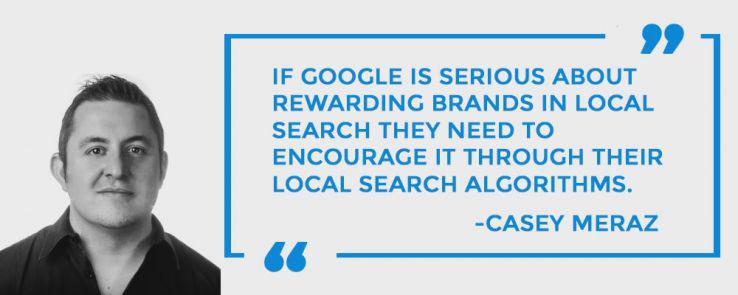
 11 Lessons Learned from Failed Link Building Campaigns
11 Lessons Learned from Failed Link Building Campaigns
We’ve created more than 800 content campaigns at Fractl over the years, and we’d be lying if we told you every single one was a hit.
The Internet is a finicky place. You can’t predict with 100% accuracy if your content will perform well. Sometimes what we think is going to do OK ends up being a massive hit. And there have been a few instances where we’d expect a campaign to be a huge success but it went on to garner lackluster results.
While you can’t control the whims of the Internet, you can avoid or include certain things in your content to help your chances of success. Through careful analysis we’ve pinpointed which factors tend to create high-performing content. Similarly, we’ve identified trends among our content that didn’t quite hit the mark.
In this this post, I’ll share our most valuable lessons we learned from content flops. Bear in mind this advice applies if you’re using content to earn links and press pickups, which is what the majority of the content we create at Fractl aims to do.
1. There’s such a thing as too much data.
For content involving a lot of data, it can be tempting to publish every single data point you collect.
A good example of this is surveying. We’ve fallen down the rabbit hole of not only sharing all of the data we’ve collected in a survey, but also segmenting the data out by demographics — regardless of whether or not all of that data is super compelling. While this can give publishers a large volume of potential angles to choose from, the result is often unfocused content lacking a cohesive narrative.
Only include the most insightful, interesting data points in your content, even if that means tossing aside most of the data you’ve gathered.
One example of this was a survey we did for a home security client where we asked people about stalker-ish behaviors they’d committed. The juiciest survey data (like 1 in 5 respondents had created a fake social account to spy on someone — yikes!) ended up getting buried because we included every data point from the survey, some of which wasn’t so interesting. Had we trimmed down the content to only the most shocking findings, it probably would have performed far better.
Furthermore, the more data you include, the more time it takes for a publisher to wade through it. As one journalist told us after we sent over an epic amount of data: “Long story short, this will take too much time.”
Consider this: It shouldn’t take a publisher more than 10 seconds of looking at your project to grasp the most meaningful data points. If they can’t quickly understand that, how will their readers?
2. Turning published data into something cool doesn't always yield links.
If you’re going to use data that’s already been reported on, you better have a new spin or finding to present. Journalists don't want to cover the same stats they have already covered.
A great example of this is a project we created about the reasons startups fail. The majority of the data we used came from CB Insights’ startup post mortems list, which had performed really well for them. (As of the time I’m writing this, according to Open Site Explorer it has 197 linking root domains from sites including BBC, Business Insider, Fortune, Vox, CNBC, and Entrepreneur — impressive!)
It worked well once, so it should work again if we repackage it into a new format, right?
We used the startups featured on the CB Insights list, added in a handful of additional startups, and created a sexy-looking interactive node map that grouped together startups according to the primary reasons they went under.
While the content didn’t end up being a failure (we got it picked up by Quartz, woo!), it definitely didn’t live up to the expectations we had for it.
Two problems with this project:
1. We weren’t saying anything new about the data.
2. The original data had gotten so much coverage that many relevant publishers had already seen it and/or published it.
But of course, there are exceptions. If you’re using existing data that hasn’t gotten a ton of coverage, but is interesting, then this can be a smart approach. The key is avoiding data that has already been widely reported in the vertical you want to get coverage in.
3. It’s difficult to build links with videos.
Video content can be extremely effective for viral sharing, which is fantastic for brand awareness. But are videos great for earning links? Not so much.
When you think of viral content, videos probably come to mind — which is exactly why you may assume awesome videos can attract a ton of backlinks. The problem is, publishers rarely give proper attribution to videos. Instead of linking to the video’s creator, they just embed the video from YouTube or link to YouTube. While a mention/link to the content creator often happens organically with a piece of static visual content, this is often not the case with videos.
Of course, you can reach out to anyone who embeds your video without linking to you and ask for a link. But this can add a time-consuming extra step to the already time-intensive process of video creation and promotion.
4. Political ideas are tough to pull off.
Most brands don’t want to touch political topics with a ten-foot pole. But to others, creating political content is appealing since it has strong potential to evoke an emotional reaction and get a lot of attention.
We've had several amazing political ideas fail despite solid executions and promotional efforts. It’s hard for us to say why this is, but our assumption has been publishers don't care about political content that isn't breaking (because it's always breaking). For this reason, we believe it’s nearly impossible to compete with the constant cycle of breaking political news.
5. Don't make content for a specific publisher.
We’ve reached out to publishers to collaborate during content production, assuming that if the publisher feels ownership over the content and it’s created to their specifications, they will definitely publish it.
In general, we’ve found this approach doesn’t work because it tends to be a drain on the publishers (they don't want to take on the extra work of collaborating with you) and it locks you into an end result that may only work for their site and no other publishers.
Remember: Publishers care about getting views and engagement on their site, not link generation for you or your client. Read full article here

 How Google's New Project Owl Update Can Affect Brands
How Google's New Project Owl Update Can Affect Brands

Last week Google announced they would be implementing changes in an effort to combat inaccurate information and hateful search results from their search engine. In this article I'll cover the possible pros and cons of this update and how it can affect brands.
What is Project Owl and how it works
Project Owl is Google's update gives users the ability to report information they may deem inappropriate, inaccurate or offensive.
Let's see how it works:
1 A new link to a feedback form will appear underneath Google's suggested searches;
2 A new link to a feedback form will appear underneath "Featured Snippets;"
These changes have been implemented after Google has been scrutinized for sharing some questionable content. In December of 2016 the number one result for the search query "did the Holocaust happen" was linked to a pro-Nazi site. Other missteps include featuring Breitbart for a top science or news story regarding the Great Barrier Reef.
Project Owl is Google's reaction to combatting these problematic results. Whether it's inaccurate information or offensive search queries, Google wants to ensure that what we receive is reliable and relevant information.

 Local SEO Spam Tactics Are Working: How You Can Fight Back
Local SEO Spam Tactics Are Working: How You Can Fight Back

For years, I've been saying that if you have a problem with spammers in local results, you can just wait it out. I mean, if Google cared about removing spam and punishing those who are regular spammers we'd see them removed fast and often, right?
While there are instances where spam has been removed, it seems these are not fast fixes, permanent fixes, or even very common. In fact, they seem few and far between. So today I’m changing my tune a bit to call more attention to the spam issues people employ that violate Google My Business terms and yet continue to win in the SERPs.
The problems are rampant and blatant. I've heard and seen many instances of legitimate businesses changing their names just to rank better and faster for their keywords.
Another problem is that Google is shutting down MapMaker at the end of March. Edits will still be allowed, but they'll need to be made through Google Maps.
If Google is serious about rewarding brands in local search, they need to encourage it through their local search algorithms.
For some people, it’s gotten so bad that they’re actually suing Google. On January 13, 2017, for instance, a group of fourteen locksmiths sued Google, Yahoo, and Bing over fake spam listings, as reported by Joy Hawkins.
While some changes — like the Possum update — seemed to have a positive impact overall, root problems (such as multiple business listings) and many other issues still exist in the local search ecosystem. Read full article here
Customer support service by UserEcho








